Jason Abdelhadi
Ordovician Notebook
In the summer months we live in the ordovician era, 400 million years ago. Geological uncomformity has left us surface dwellers without a choice—after the glaciers we face a massive plummet through time with a single step. Our feet dangle in modern times but our heads dream on pillows of unfathomable age. Ottawa contains many physical traces of deep time, of shallow tropical oceans and long-extinct marine life. We are a valley surrounded by highlands of precambrian outcrops, some of the oldest rocks in north america, the remnants of an ancient mountain range as high as the himalayas. But beneath the city itself are many layers of sedimentary rock dating to the era of trilobites, brachiopods, and orthoconic cephalopods, before life crawled onto land, a great alien conspiracy beneath the neo-gothic façade of our surface architecture.
These fossils often actually lie out in the open, in bits of black shale known as the Billings formation. The pell mell dumping grounds of construction projects, infrastructure and real estate, are not infrequently rife with these blackened plate-like testaments of the ancient oceans. Certain areas along the river expose the fossils readily, and one does not need to seek far for these zones. Beneath the ridiculous pomp of the parliament buildings, or on the cliffside at the rear of our national gallery, housing so much “fine art” at the service of state grandeurs, the secret galleries of the aeons cradle the water and mud without any pretension or sponsorship. In these shaded areas where for years I found the remnants of useless activities, free from development, where hobos build jungles and condoms and snack bags are rife, the blackened fossils gaze out with their unblinking intensities or boredoms. The rip-rap left along the shore to bolster it against the riotous river has likewise in recent years invoked the sedimentary remnants of the ancient ocean as a defence against rising levels. Old waterways deployed against the onslaught of the new.
But pandemics and other crises of the here and now can easily be reduced to insignificance by means of a little time-travel. A few weeks of touring these sites on daily walks allowed me to practice a kind of psychogeology, a passage through the atmosphere of aeons on top of or in matrix with the life of the city. It is an obsessive and exhausting way to pass the time, hours pass without a care mud raking along the broken shoreline, dodging and speculating, looking for patterns in the rock or in the mind that relate in the end to certain poetic ideas.
The bucklers (Triarthrus eatoni, Pseudogygites). At the level of distinct creatures, the long extinct trilobites crawl onto my face and cover my eyes, nose, and mouth. They invoke shields, heraldry, armor, the armed playing cards and incoherent, byzantine hierarchies of Wonderland. They often come in fragments, bizarre bottoms or tops that stand out starkly and characteristically with the force of a collage. They are mutilated, decapitated, shattered leftovers. They are consequently gothic, romanticizing half-things, strange siege-machines from a Bosch hellscape, the leftovers from the Battle of Who Knows What. Shattered and undead. When found whole they impress us like seals on letters, archives in the peeling layers of an insanely dense library.
The missiles (Actinocerids). Then come the indented impressions of the orthoconic shells, the jousting lances with tentacle mouths, early nautiloid cephalopods whose rigidly straight armor could be inverse biorockets or equally a strange white and golden gash in the black shale. Orthodox predecessors of the squids and octopuses, these ancestors leave cryptic but unshakably rigid instructions in aquatic chivalry. They shock us with their straightness, which in a wriggly world becomes a kind of scientific instrument by which poetic insight measures itself. The sectional divisions speak to utopian designs for great phalansteries, life on the nautiloid (and didn’t Nemo understand this? Won’t his next submarine be called The Orthconone?) Another suit for the deck.
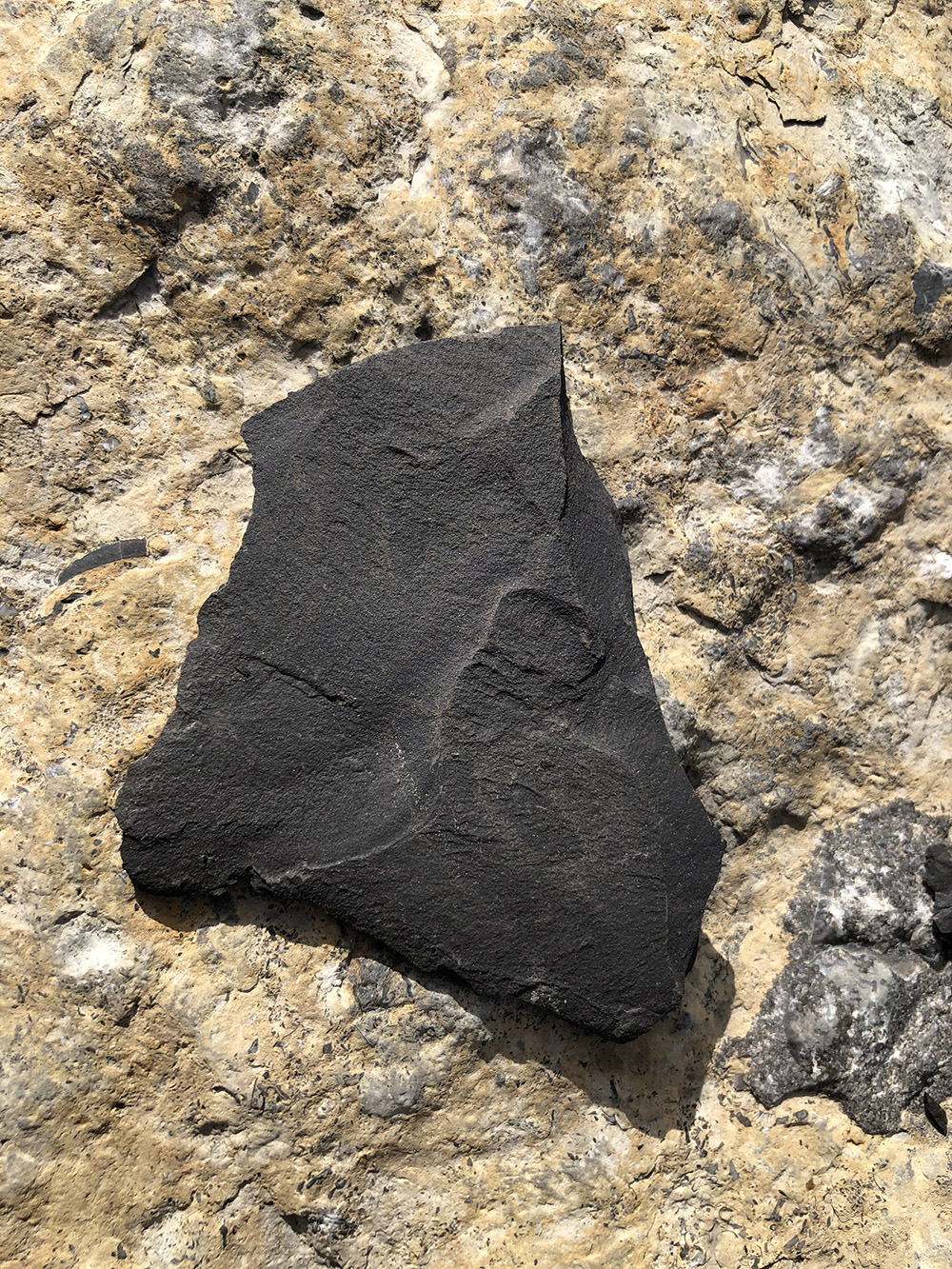
The questions (Hyolitha). A mystery: the little creepy hyoliths, sometimes popularly billed in the media as “living ice-cream cones”. I notice their odd whispy ends and think rather of thin beautiful nails painted black, scratching at flesh. They are the Elizabeth Bathories of the Benthos.
Then come the all-sorts. The brachiopod and gastropod shells, crinoid stems alternate too, circles and helmets, in great abundance, like the pips on the suit cards or bizarre grotesques denoting some Fulcanelli’s system in deep obscurity. But their order is a mixture, usually in a heaving mass, all sorts of directions and sizes and indeed more of a jumble sale, a box of keys or old typewriter components sold as novelty paperweights for a few dollars each. An ode to junk, accumulations, heaps, accretions, yard sales: miscellaneagnosis.
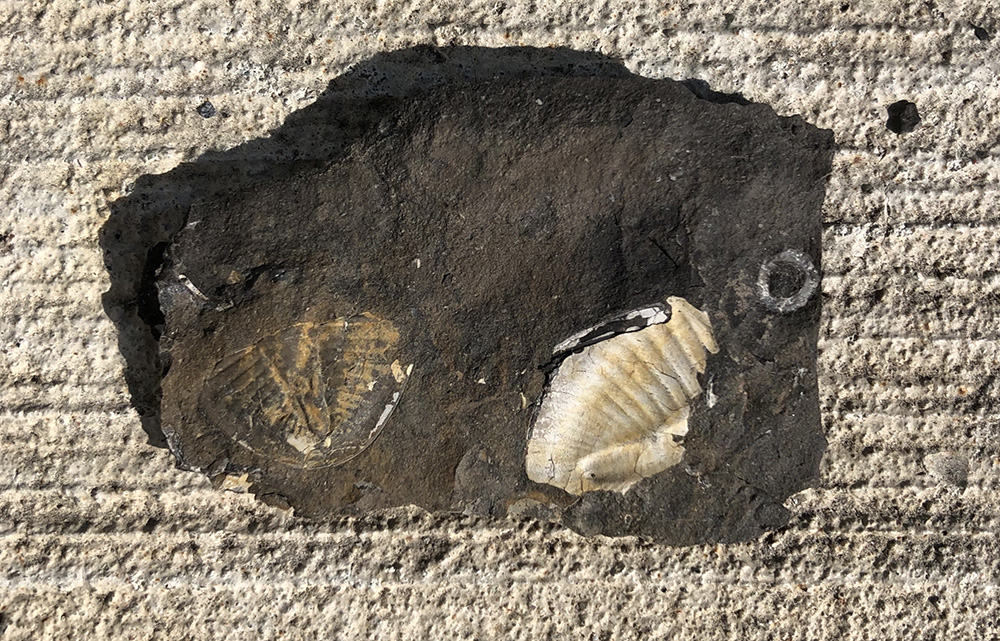
But one feature that is easily seen all along the shale along the edge of the river, and of which I wish to emphasize especially, are the great conglomerate “trace fossils”. These are found in such abundance and with so little effort (if one chooses to see) and with such high poetic reward (if one chooses to live) that I am almost tempted to cite them as Ottawa’s local specialty vis a vis a poetry “made [or in this case found] by all, not some”.
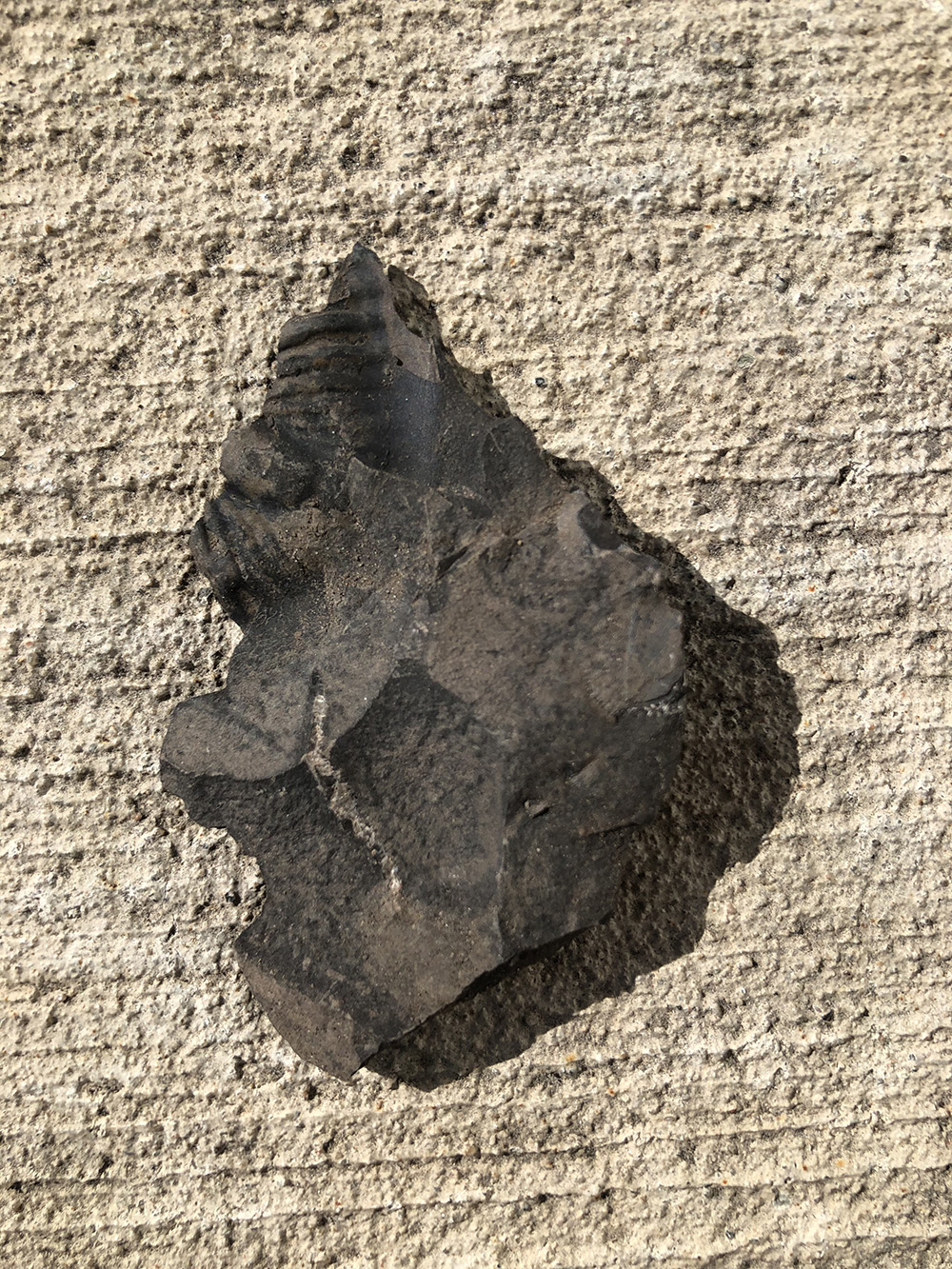
…And doesn’t it take a certain belief, a certain mental receptivity and a certain paranoia to learn to see fossils in the first place? This gives them at least a notional proximity to the surrealist found object: not only as a tool for conceptual deplacement, but requiring a kind of pre-derangement and hypersensitivity in the seeker as a prerequisite for their appearance at all. One has to believe it’s possible to see the Ordivician at one’s feet before it reveals itself in so many strange tunnels, grooves, diabolical impressions. There is a pareidoliac element that is ever present and, maybe especially in the amateur, a major feature of the hunt. We are—especially with trace fossils—unsure, tenuous. Is this just a weathered stone? Or is it ancient “portable” rock art as some strange people think? Or a trace of living thing? It might be good to keep track especially of the erroneous fossils, the misinterpretations, the ambiguous shadow catalogue of mistakes, for they are surely no mistakes from the perspective of the subconscious at work. This is where the idiotic casual hunter has a poetic advantage over the expert. The ability, within an established context, to creatively misinterpret with abandon. Poetry will be made by error, or it will not be…
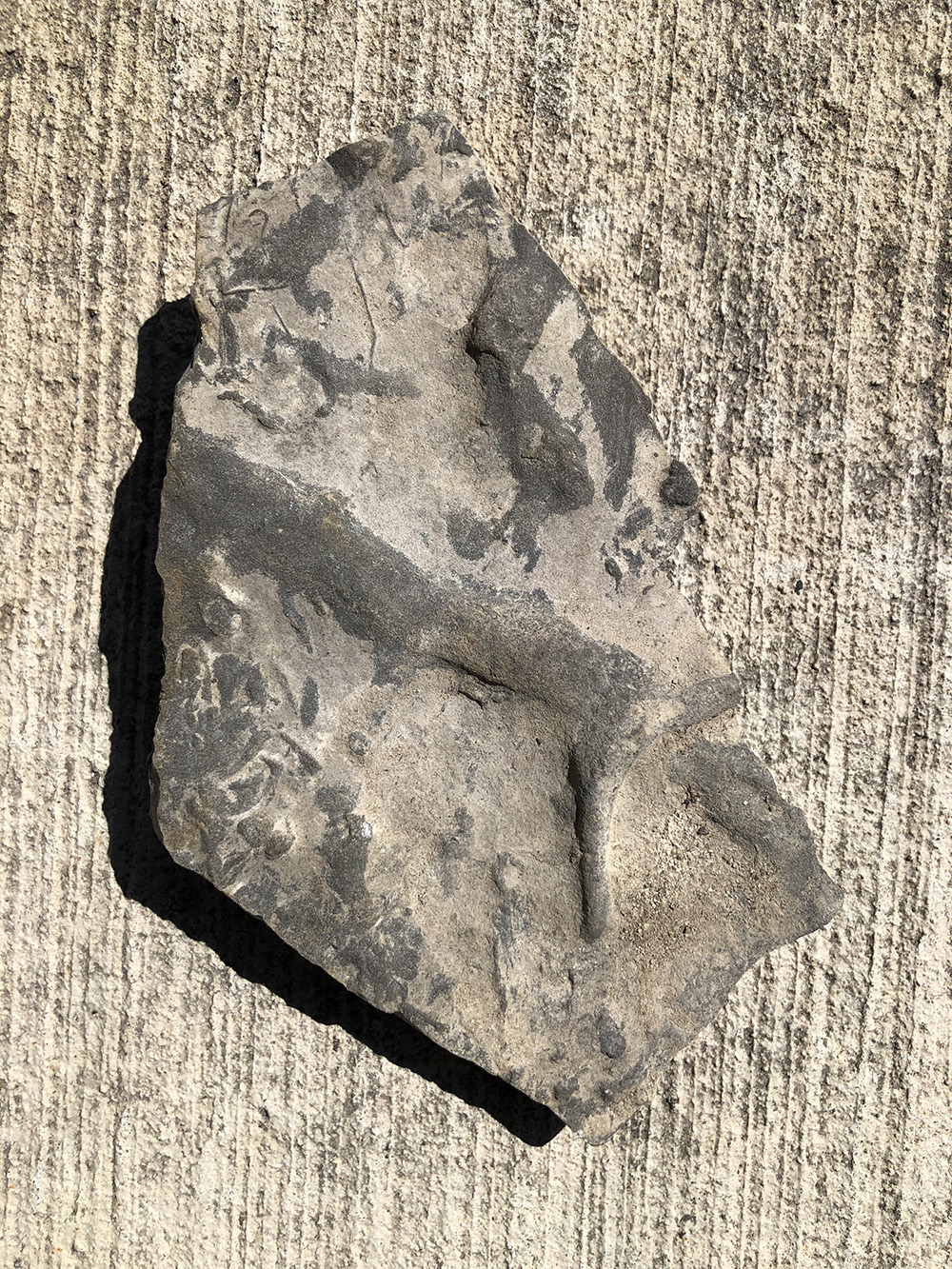
What is the poetry of trace fossils in particular? Like the secrets of surrealism and painting, and the revelations of the gnashing eye, for which they are signals, and windows. They represent the leftover landscaping of an ancient life form, but through mise-en-scène only. An ordovician drawing room after the struggle with an antediluvian Fantômas. The air of the not-yet or the catastrophically imminent. Poetry works in these missing elements. We see burrows mixed with craters, gaps, little crossing patterns, bits of They are architectures, in many cases, and do well next to Chirico. They partake in the same atmosphere and the same kind of imminent threat—of almost presence of—what? The shadows flit across their bewildering assortments.
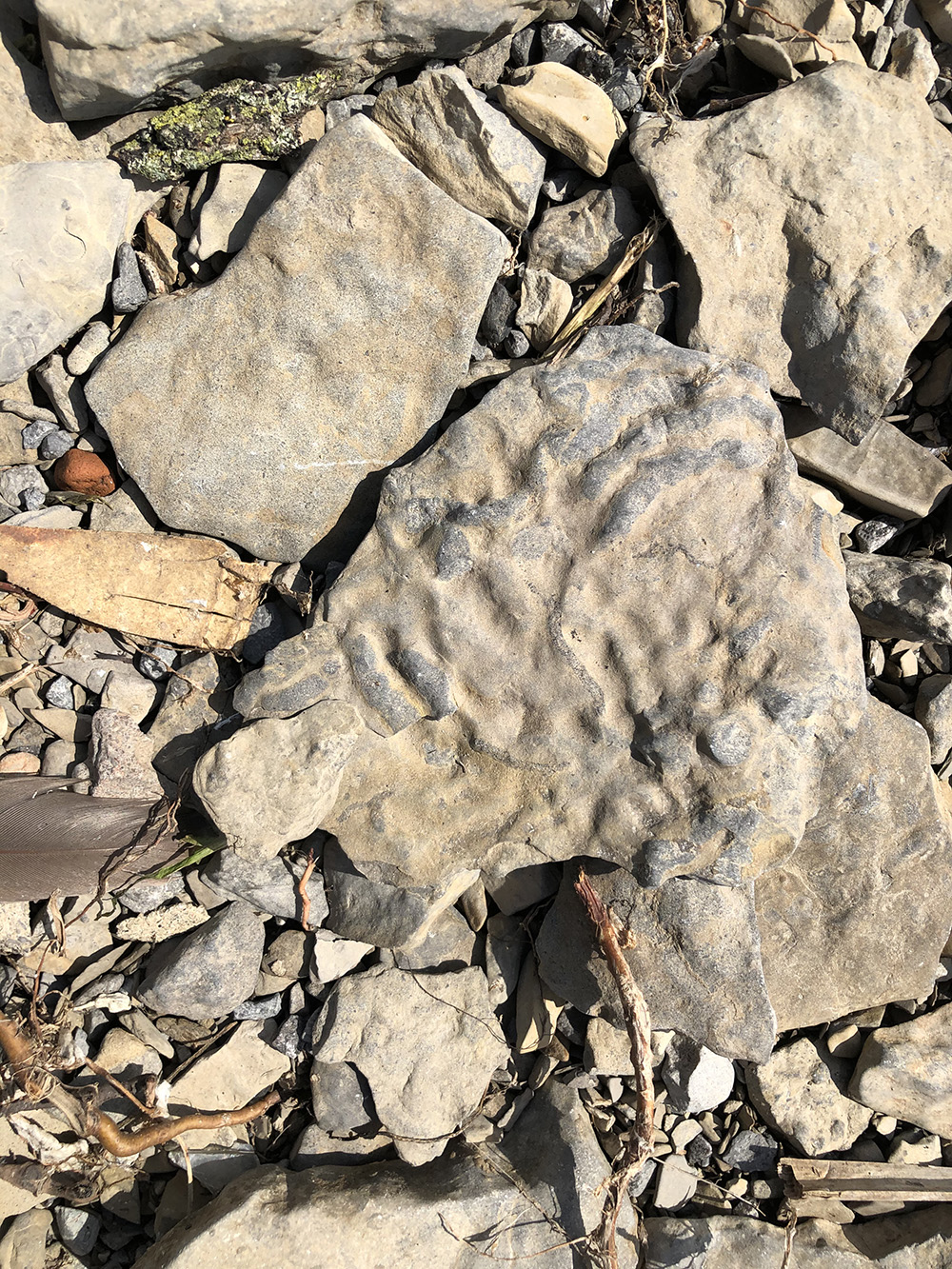
They are given names, these things we are unsure of. These are the names of a redoubled mystery—fossil of a fossil, trace of a trace.
The burrow (Rusophycus). Perhaps the most easily found, and easily confounded, of the trace-fossils. These appear in lumps, like little elevated sarcophagi in the rock, and in many different combinations, architectures, scenes. They are ambiguous but hint enigmatically at some life-form’s sense of place, that of an ancient trilobite. They remind me of the blank stares of a mannequin. They often combine with weathering on exposed rocks and traces of plant-life, crinoids, fossilized shells etc. to depict a weird Lovecraftian inversion of a “landscape”. They are simply hypnotic, like hints, captivating, but also truly scary in their corpse-like aspect, the mineralized burial shroud hiding something in the ambiguous package. Like Man Ray’s “Enigma of Isidore Ducasse”, they are draped and heaped and bound up, and this gives them their power to disorient us.
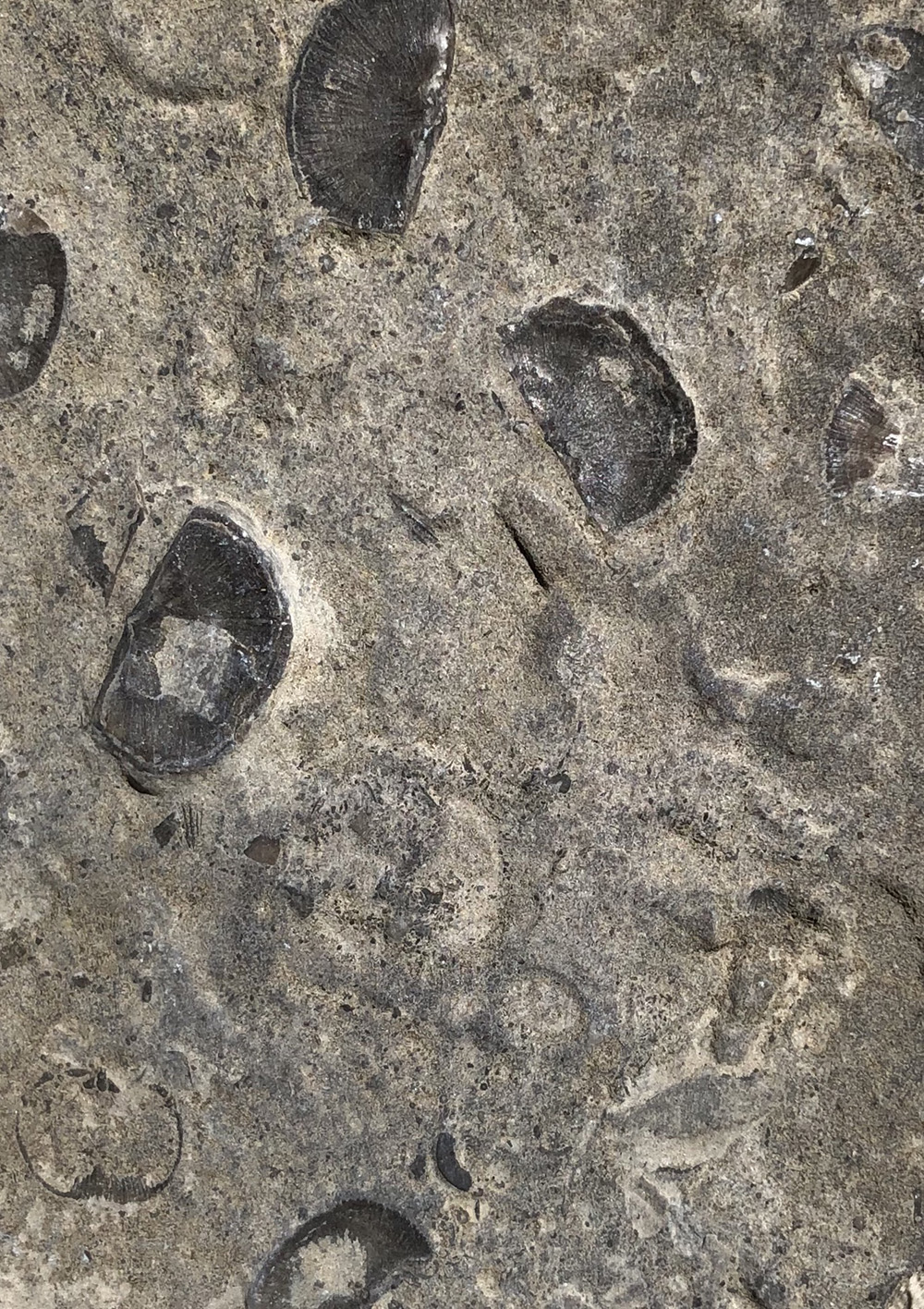
The path (Cruziana). These trace fossils, a general category, demonstrate the movement of the creature under the benthic surface. They trace odd lines and veins into the rock and illustrate a definite progression, a linear view of history or a confusion (beautiful, convulsive, desperate) of the labyrinth. The tunnels of the first explorers. On the summer solstice I find one just as the sun sets. They indicate a strange sort of comic strip or animated sequence—perhaps the first animated cartoon. The humble monster burrows through the benthic wackyland like Bugs Bunny would do so many times later. Whenever we see this we know Bugs has entered the great secret Rabbit Hole of Lewis Carroll and that this magic place is full of fine furnishings, carrot jars, plummeting ideas, but also a strange Alician calmness (for the passage is long enough to induce reflection). A crossing. When Bugs pops up in the desert or in the snowy himalayans we see the burrow trail in the background. He pulls out his map and suggests a different turn at Albuquerque. There is no going back.
A circular gastropod shell. The point of fixation. A stomach-eye looking back at me in the midst of this stony, steaming solar locus. The smell of some hot plants, the river, all around me traces and fossils and the bones of seagulls and pike. I hide in the shade and sit precariously on some ancient silhouette of a plant. Above me I suddenly hear desperate crying, a couple breaking up, someone is screaming, and then some other time near the same spot, some people frantically making out… People come here a lot to experience the rawness of couplehood. It is one of the few accessible non-places in the immediate vicinity of the tourist district downtown. It clings in a very narrow, rocky shoreline covered in fragments and bramble to a towering wall, an atypical atmosphere for the city, a gigantic old wall that scales to the heights and seems like an impossible dream in this gently rolling city. We face north and see the vast chill of the wilderness crawling its way past the river to the arctic. In the awful silence, the gastropods and brachiopod fossils chatter away in their mineralized plotting.
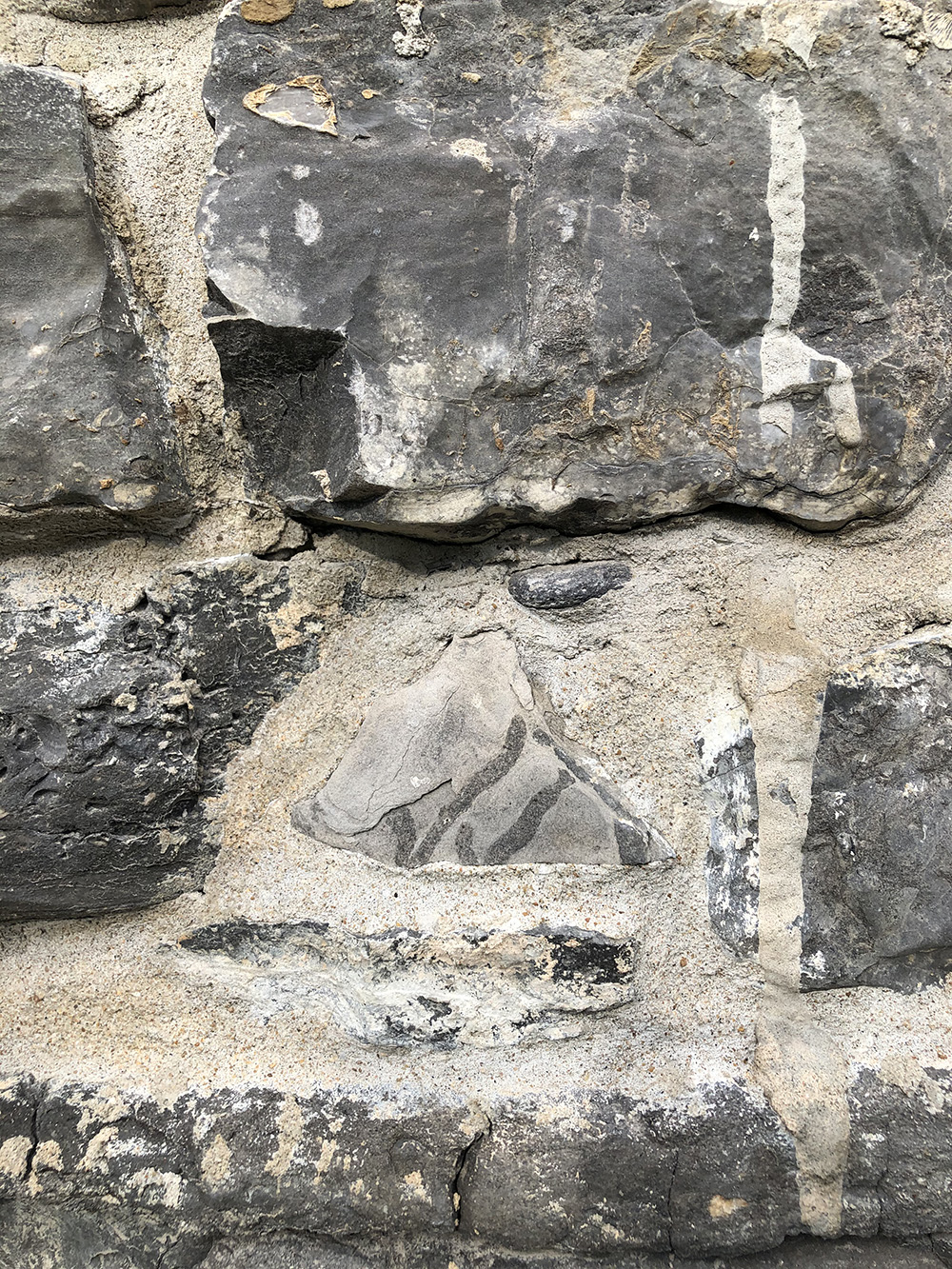
The pandemic has maybe prompted more fossil-thinking, at least driving more people to them for want of anything better to do. Friends unprompted talk about finding brachiopod shell fossils. A particular spot near the river hosts a few massive black shale boulders. I visit them often but hesitate to damage them. Yet in a matter of weeks since beginning this fossil revery, one of the big boulders has been unaccountably exploded. Fragments are everywhere, trilobyte pieces especially. I see a points card to a bookstore, and some kind of white toothpaste-looking substance smeared on some of the debris. No big action since the pleistocene and now? A trilobite change purse.
And then as a postscript, the pieces of the aeons follow you back. Many of the older buildings in the city are, I begin to notice, built with a disregard for the type of rock—metamorphic mixed indiscriminately with fossiliferous sedimentary rocks, and from this same kind of rock that I have been crawling over. Isn’t easy actually to discern the fossils and shells on the sides of well-known sites now? They are everywhere, clinging to old highschools and national sites. When I close my eyes I can see the layers of sediment and feel them on my fingers, pry them apart. There is a surrealist game I am playing in the perpetual unearthing of wonders and traces, a kind of trace that doesn’t stay put when you find it but follows you home like a weird street creature, and really this is the only surrealist game there is. When I turn the corner, there they are. We’re not so far apart.
